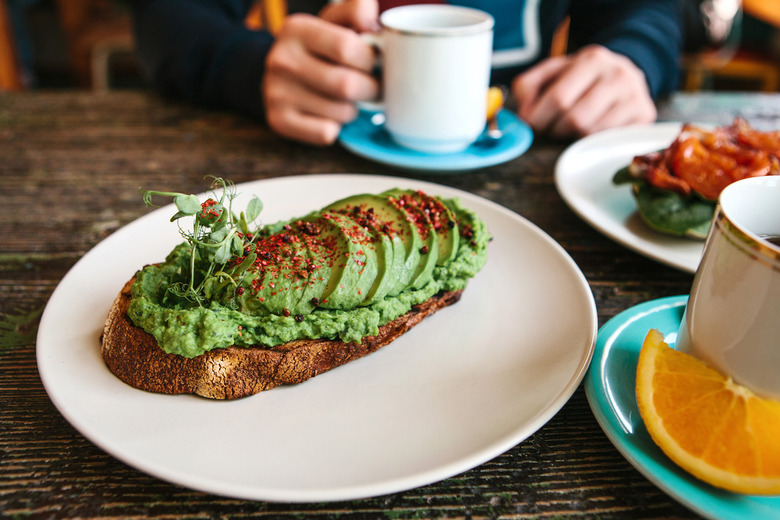11 Healthy Snack Foods To Keep You Full
When hunger pangs strike in between meals, they can come on suddenly and persist, leaving little room for concentration on the task at hand. Whether it's 2 p.m. and you're at the office, trying to get some more papers shuffled around, or afterschool and you're at soccer practice, trying to warm up, or on a long, long road trip with nary a rest stop in sight, reaching for that bag of chips, cookies, or candy may seem awfully tempting. And once you've done the dirty deed, it seems like only minutes later, hunger strikes again.
But it doesn't have to be that way. With a little advance planning, you can eliminate the vending-machine mentality. That's why we've consulted a couple of experts on the best healthy snack alternatives that will hold you over until the next meal, instead of triggering cravings.
Meet Matt Terry, a certified personal trainer and former Olympic athlete with a list of letters after his name that would rival most doctors. Terry says, "The best snack foods really depend on someone's goals and current body composition. For example, if you are an endurance athlete who runs five miles a day, your snack choices will be far different from someone on a fat-loss program who leads a sedentary lifestyle." Ultimately, that means someone who is training for a marathon is probably going to be able to eat more foods higher up on the glycemic index without seeing the same negative impact as the couch potato. That's an important point, because admittedly, the aim of this article is indeed to help out the couch potatoes out there, or perhaps more generously, the active couch potatoes. (Yes, there is such a thing, apparently.)
But, let's back up a second. What is the glycemic index (GI)? In a sense, not all carbohydrates are created equal, and the GI helps tease out the differences. According to Terry, it's simply a measure that determines how quickly a carbohydrate will affect blood sugar levels. The scale runs from one to 100; a rating of 55 or below is considered a low GI for a food item, 56 to 69 is a "moderate" GI rating, and 70 or more is considered high. A higher rating indicates that the carbohydrates in the food item in question will increase blood sugar levels faster in a set period of time, and ultimately, means that it will be easier to store as fat.
However, an even better measure is the glycemic load (GL), which takes into account how much each carbohydrate per serving will increase blood glucose levels. For a single serving of a particular food, a GL of 10 or less is considered good, and 20 or more is considered high. Most people will not want to exceed a total glycemic load of 100 per day. Terry says that your stomach has stretch receptors that tell your brain when it's full, and a good way to fool your brain into thinking your stomach is full is to snack on foods with a low glycemic load.
How can someone look up the glycemic load of a particular food? There are myriad resources out there, but one site worth checking out is NutritionData.com, which pulls data from the USDA's National Nutrient Database for Standard Reference. Upon searching for a particular food item, users are presented with a nutrition facts label (like the ones on the side of cereal boxes) as well as a more in-depth analysis of the various vitamins and minerals, and assessment of the quality of the protein content of the snack in question, in addition to an estimated glycemic load.
That being said, hunting around for the glycemic loads of various snacks through trial and error probably isn't the most effective use of time for most people. That's why we turned to Amber O'Neal, nutritionist, certified personal trainer, and proprietor of Café Physique, a mobile fitness and nutrition service based in Atlanta. O'Neal has been featured in The New York Times, The Wall Street Journal, as well as the NBC Nightly News. She emphasizes the benefits of a low GI/GL diet, which include a reduction of bad cholesterol (LDL), a corresponding increase in good cholesterol (HDL), decreased risk of developing type 2 diabetes, and increased blood glucose control in those who already have diabetes. Plus, keeping blood sugar at a fairly steady level throughout the day (instead of sending it spiking and dipping with high GI/GL snacks) keeps our bodies performing at their best and can leave you in a better mood overall. She gave us the lowdown on what snack foods should be on your short list the next time the munchies strike.
Click here to see the 11 Healthy Snack Foods to Keep You Full Slideshow.
This story was originally published June 1, 2012.
